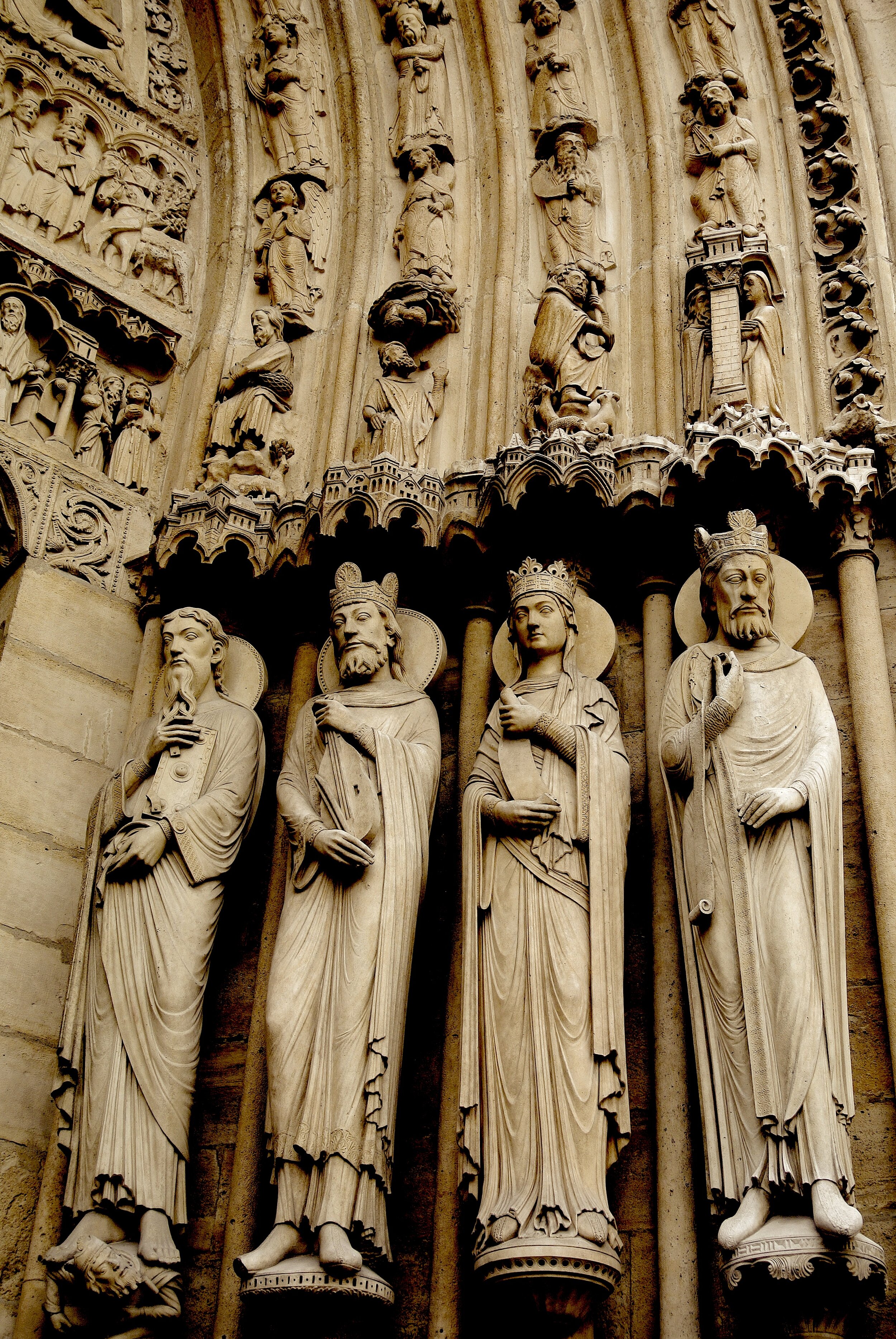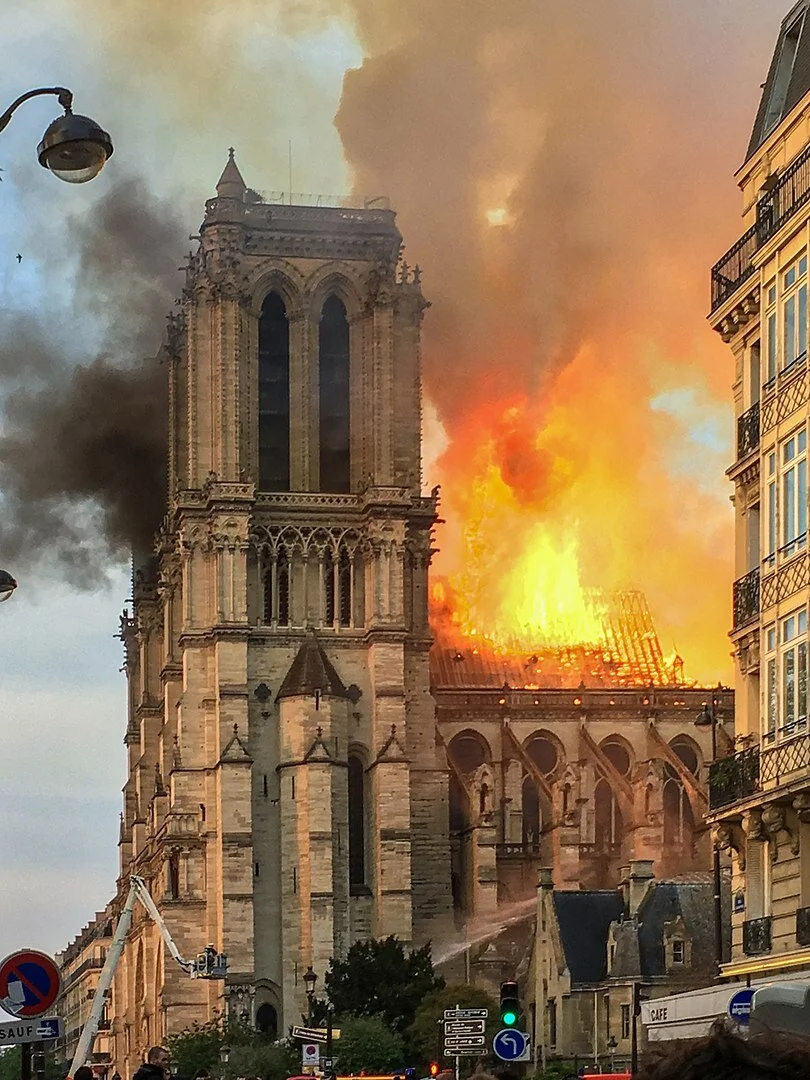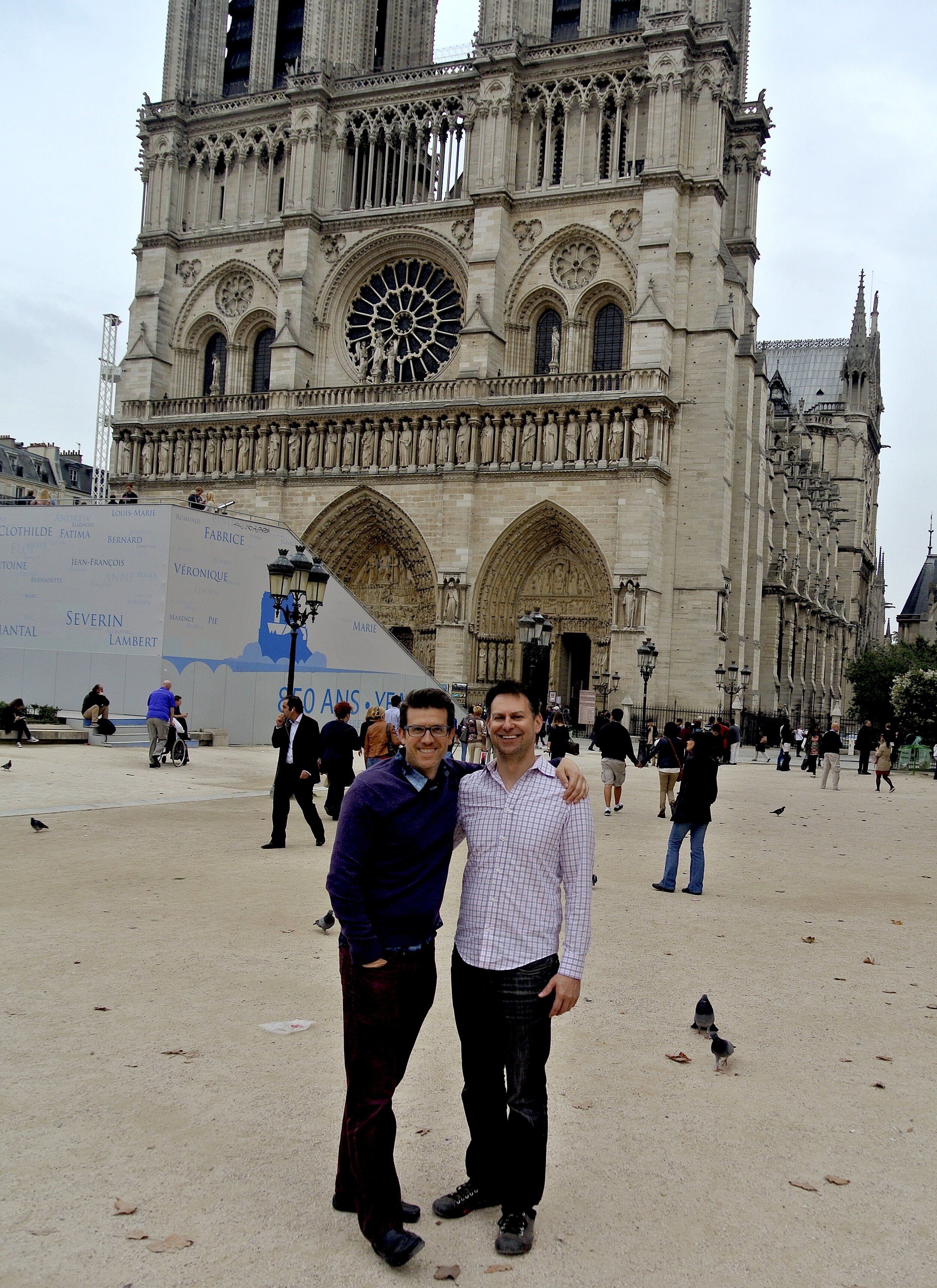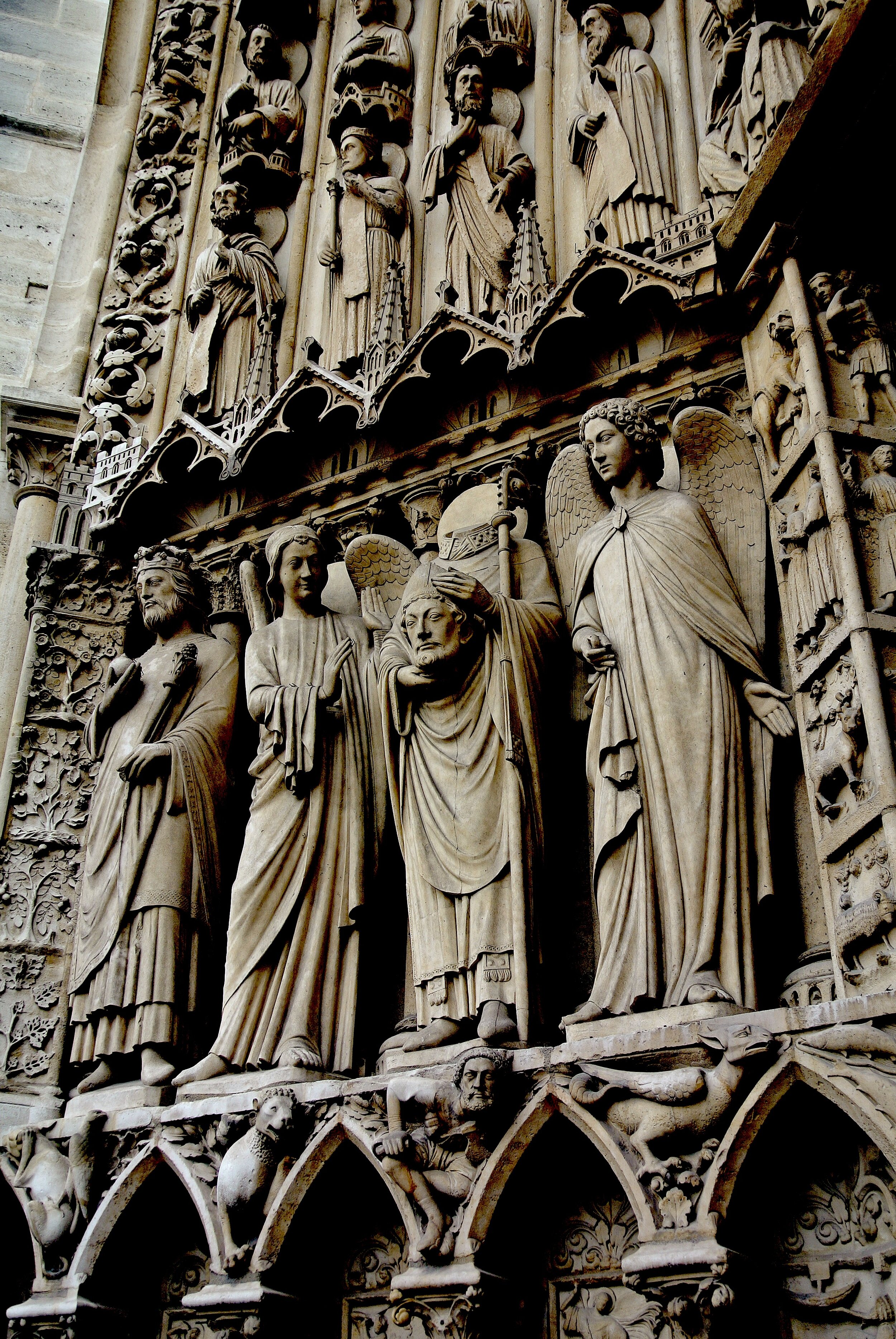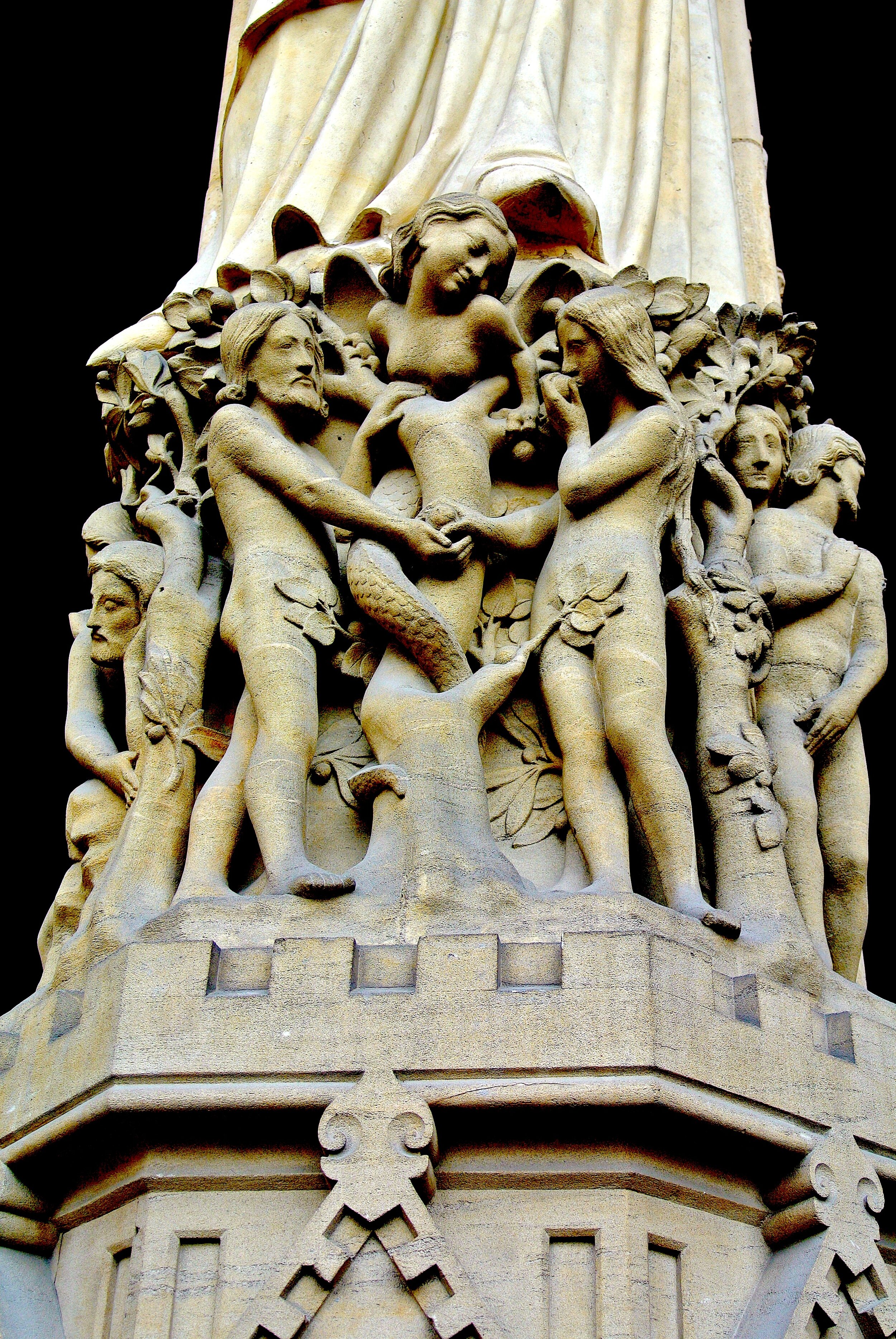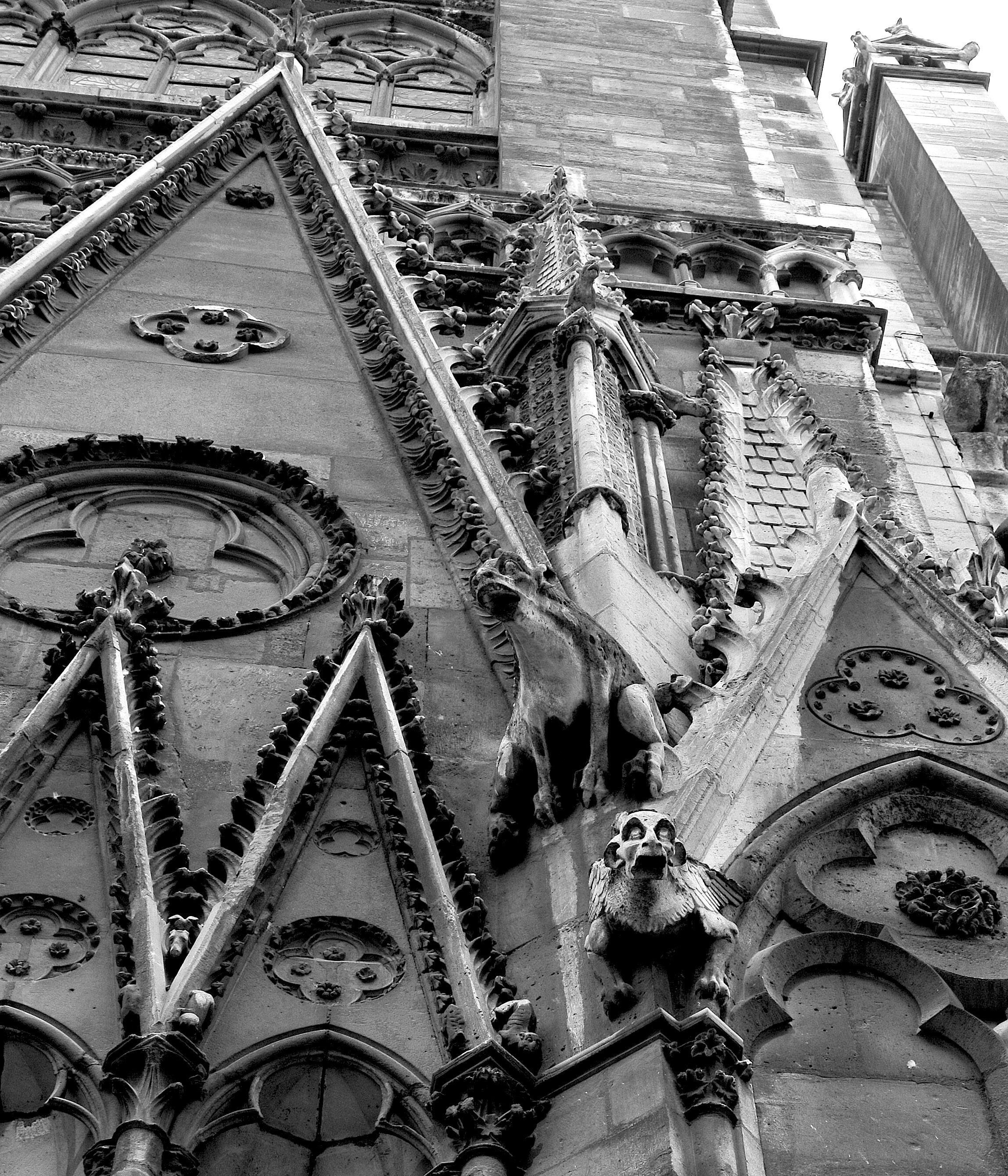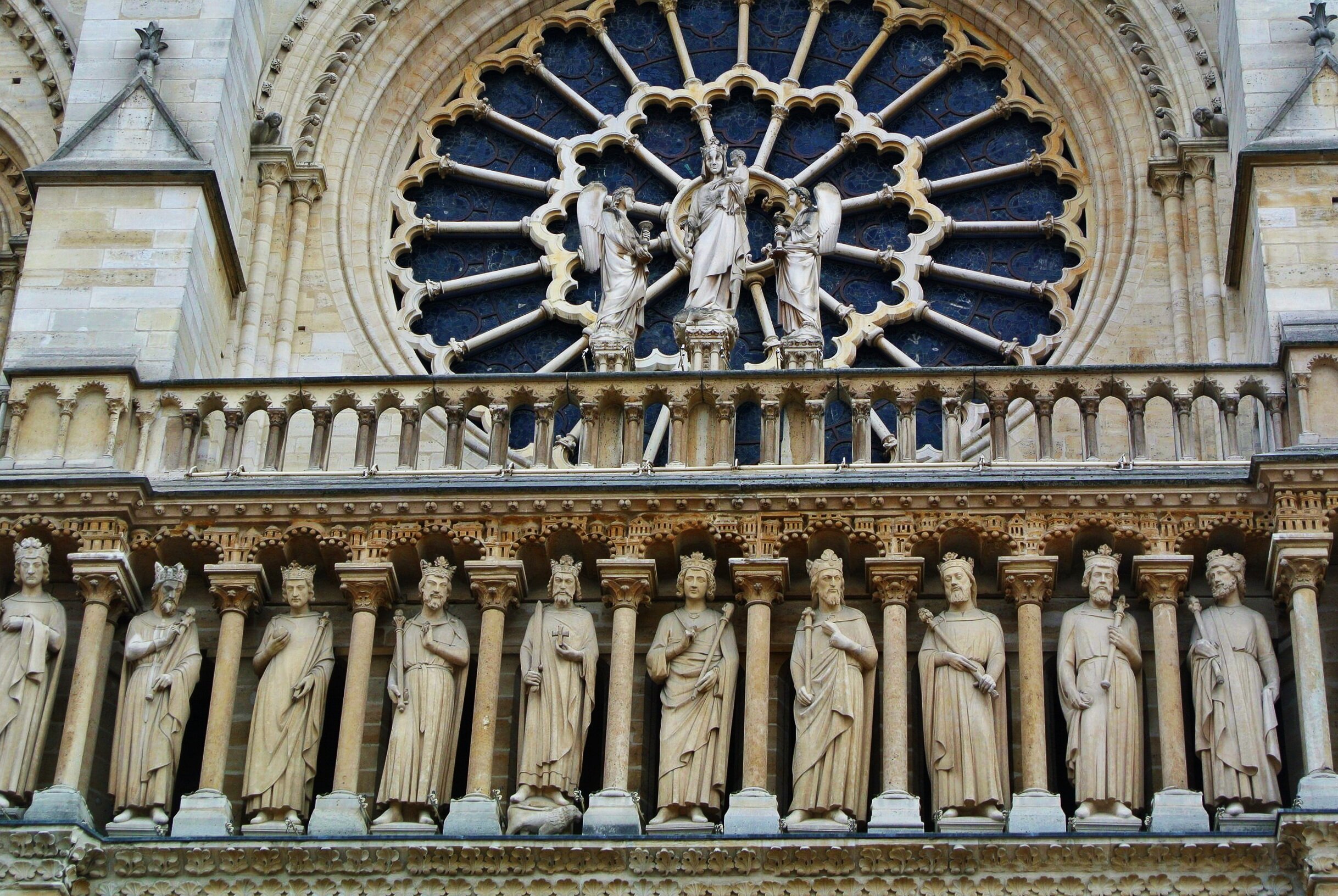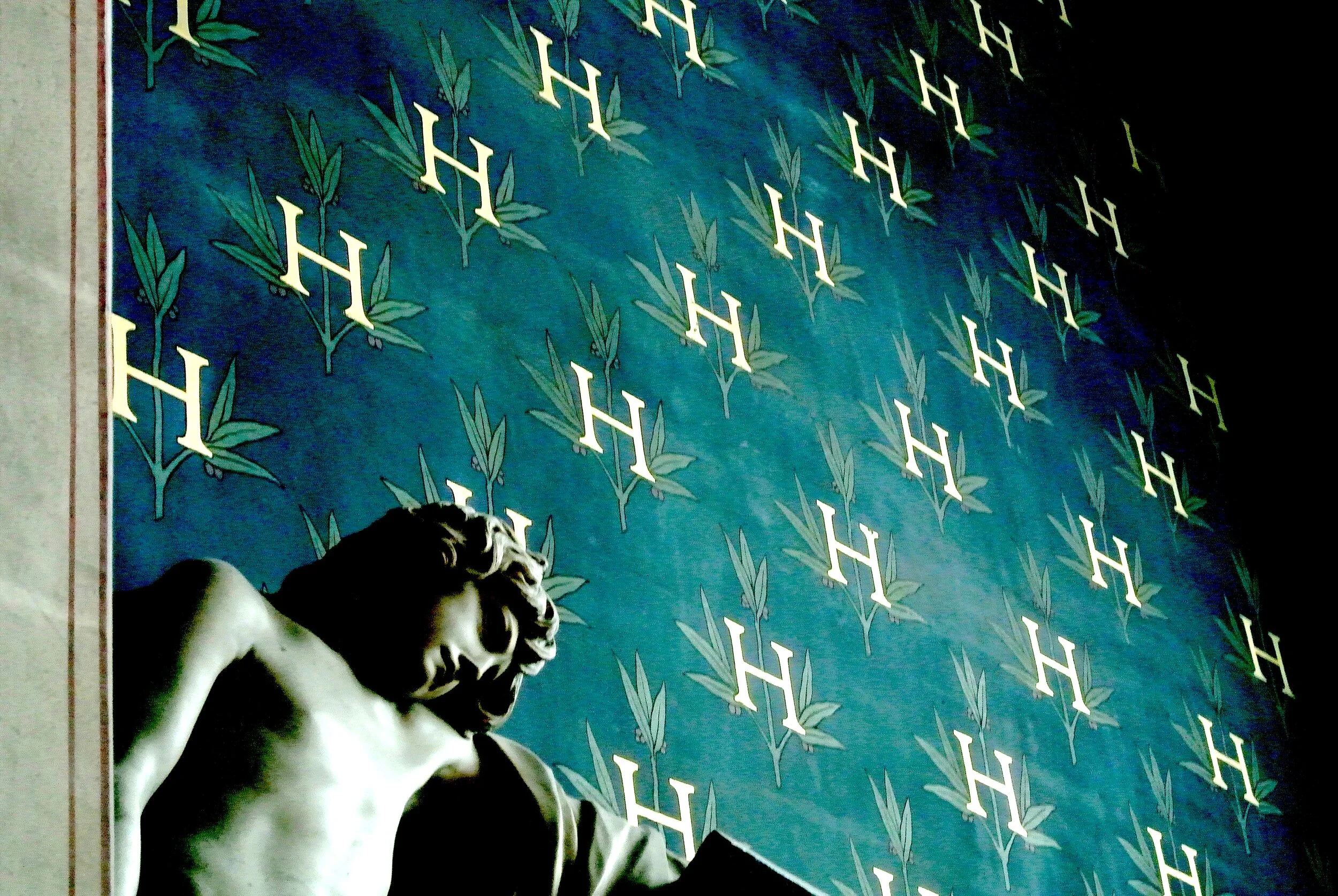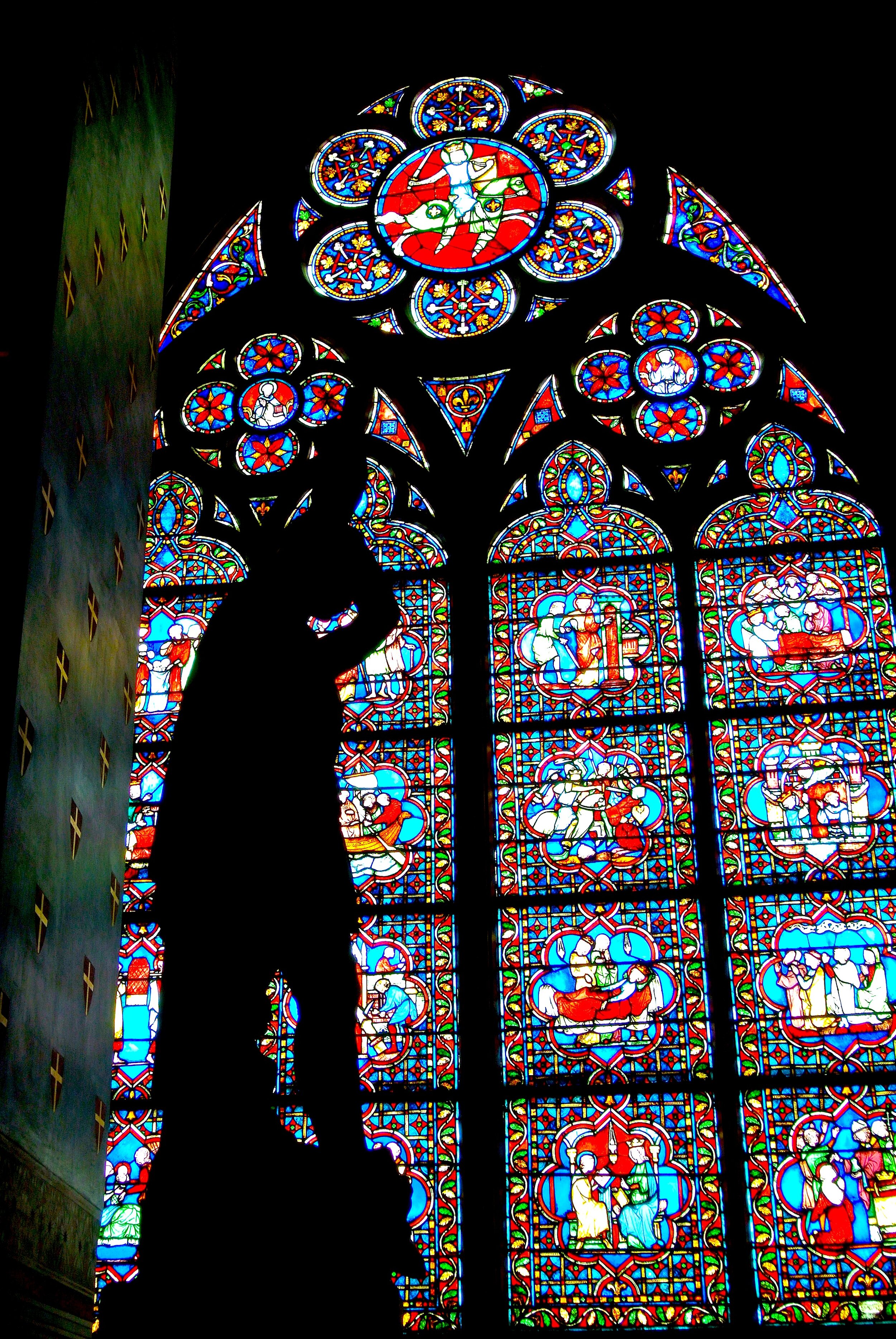We passed by Notre-Dame de Paris every morning during our week-long visit. Now you can admire some photos of the famous cathedral before the damage from the 2019 fire.
Wally jumps for joy in the beautiful garden behind Notre-Dame Cathedral, which glows a warm pale yellow.
It was the perfect morning tradition. In 2013 we visited Paris and stayed at our friends Michael and Kent’s apartment in Montparnasse. A few days into our trip my parents arrived and Duke and I would ride the Métro to meet my parents, who were staying at a cute little hotel on Île Saint-Louis. We got off on Île de la Cité and walked past Notre-Dame, before crossing the bridge to meet my mom and dad at the oh-so-Parisian Saint-Régis café at the foot of the street.
Wally’s parents stayed on the neighboring isle, so Notre-Dame was a short walk away en route to the Métro.
We felt so lucky to have this morning ritual: a stroll past what is arguably the world’s most famous cathedral, with its beautiful gardens and statues of saints and gargoyles peering out from its façade.
Saints alive! (Actually, the fact that they’re saints means they’re long dead.)
Gargoyles (chimères en français) do double duty: They scare away evil spirits and act as rainspouts.
While impressive, the interior has always struck me as a bit too claustrophobic, gloomy and choked with incense — more suited to a mystery religion to honor a pagan deity than to inspire awe in the Catholic God. I’m much more of a Sacré-Cœur type of guy.
The sides of the cathedral are dark, lit only by candlelight.
Sometimes we’d drop my parents off at their hotel in the evening. We saw the cathedral in all kinds of light. It was the backdrop to our vacation.
An electrical short most likely caused the fire that damaged Notre-Dame in 2019.
Notre-Dame and the Fire of 2019
Because Notre-Dame was such an integral part of our trip and an iconic symbol of Paris, it was with great shock and sadness that I watched news footage of the fire that consumed the cathedral on April 15, 2019. It was horrifying and heartbreaking.
The blaze started in the attic (who knew Notre-Dame even had an attic?!), causing the spire to plummet like a spear, piercing the stone vault of the 850-year-old cathedral. The most likely cause? An electrical short.
The spire, designed by Eugène Viollet-le-Duc, melted from the heat of the blaze, plunging down into the heart of the church. It once pointed heavenward 295 feet high.
Two of the biggest issues from the fire are toxic lead from the melted spire and damage to the flying buttresses, which support the vaulted ceiling.
Les pompiers, the French firefighters, had been trained how to handle such an emergency. They used low-pressure hoses and focused on saving priceless artworks and the bell towers.
While the damage wasn’t as devastating as it could have been, one of the major issues now is that the roof and spire were made of lead, which melted and poured the toxic liquid into the damaged building. Some of it formed stalactites of sorts that remain to this day.
And the very structure of Notre-Dame is at risk: The architectural innovation that supports its vaulted ceiling, the flying buttresses, tottered dangerously, threatening to collapse the structure before being shored up by temporary wood bracing.
Here’s hoping that this magnificent cathedral is someday soon renovated to its former glory. In the meantime, here are some of the photos we took on our visit before the fire. –Wally
Notre-Dame served as the backdrop of Wally and Duke’s trip to Paris.
I never promised you a rose garden — but there’s one behind Notre-Dame.
Duke in front of the bell towers, which were a priority for firefighters to save.
Duke puts Wally on a pedestal.
The carvings on the façade of Notre-Dame are quite ornate.
Notre-Dame is one of the most impressive examples of Gothic architecture.
This guy has lost his head. Saint Denis of Paris was a 3rd century bishop who was decapitated for his religious beliefs.
Adam and Eve — and the serpent, depicted as a temptress
A tarnished bas-relief
Sharp angles and monsters on Notre-Dame’s exterior
Creepy (but cool) gargoyles, their screams set in stone
Medieval griffons form this geometric pattern.
Sculptures of the kings of Judah line the façade of Notre-Dame, which was dedicated to the Virgin Mary.
One of the more hideous gargoyles seen at Notre-Dame
The main aisle of the cathedral is narrow — though surely groundbreaking at the time of its construction.
Pray for us sinners, now and at the hour of our death. Amen.
A statue of Joan of Arc (known as Jeanne d’Arc in her native France)
H is for…?
The stained glass windows add vibrant splashes of color to the otherwise gloomy interior.
Light a votive candle and admire one the famous Rose Windows.
Doubting Thomas pokes one of Jesus’ wounds after the resurrection.
A container in the cathedral is filled with letters people have written, one supposes, to God.
A model of the cathedral
Cathédrale Notre-Dame de Paris
6 Parvis Notre-Dame
Place Jean-Paul II
75004 Paris
France



